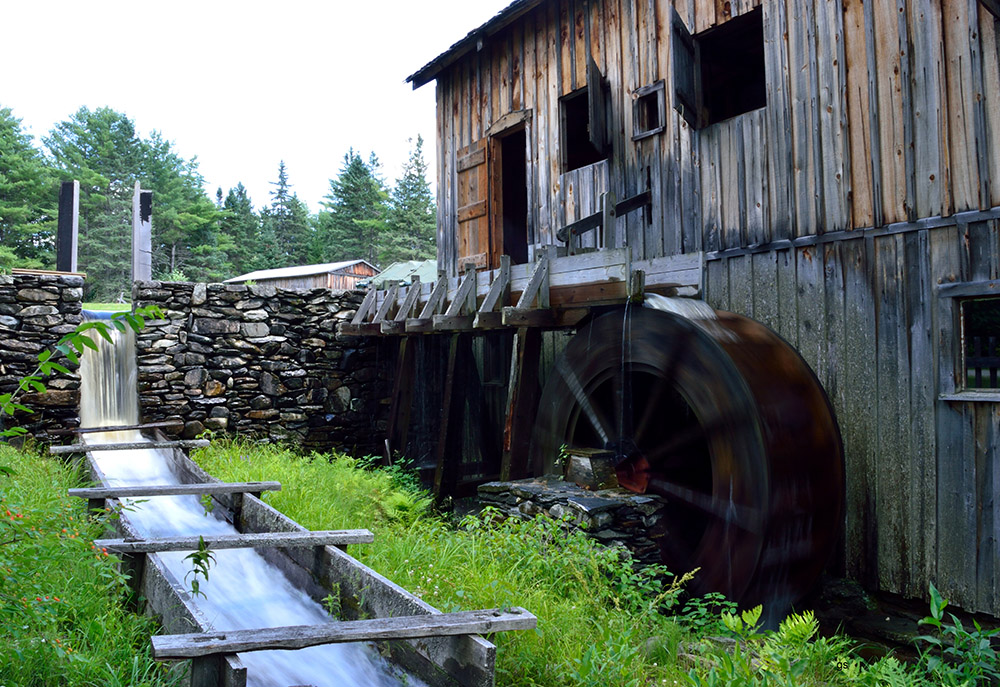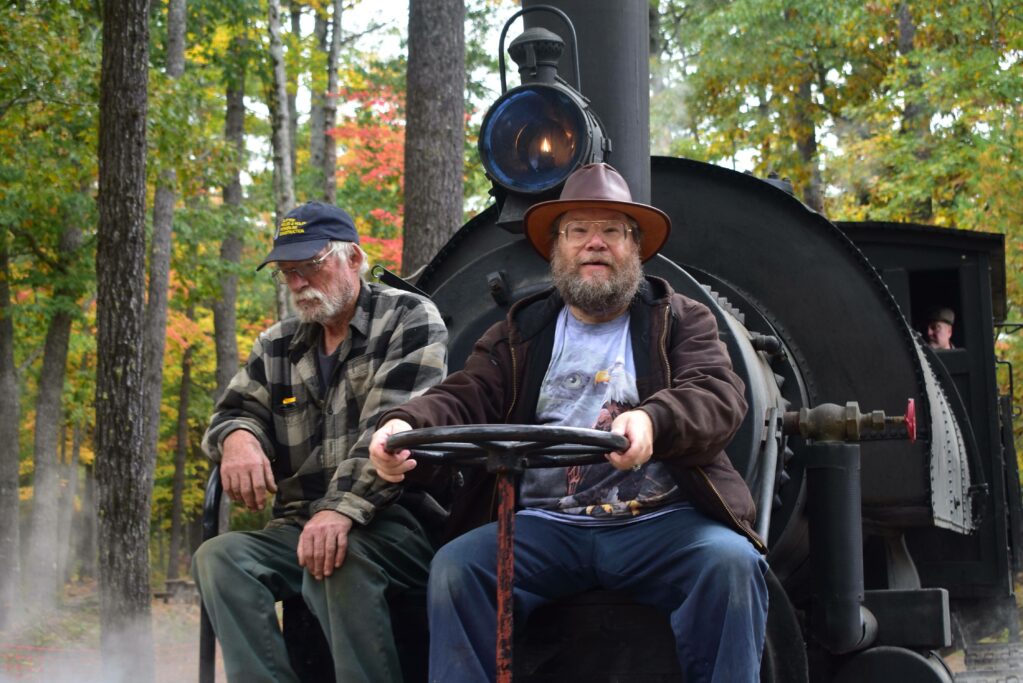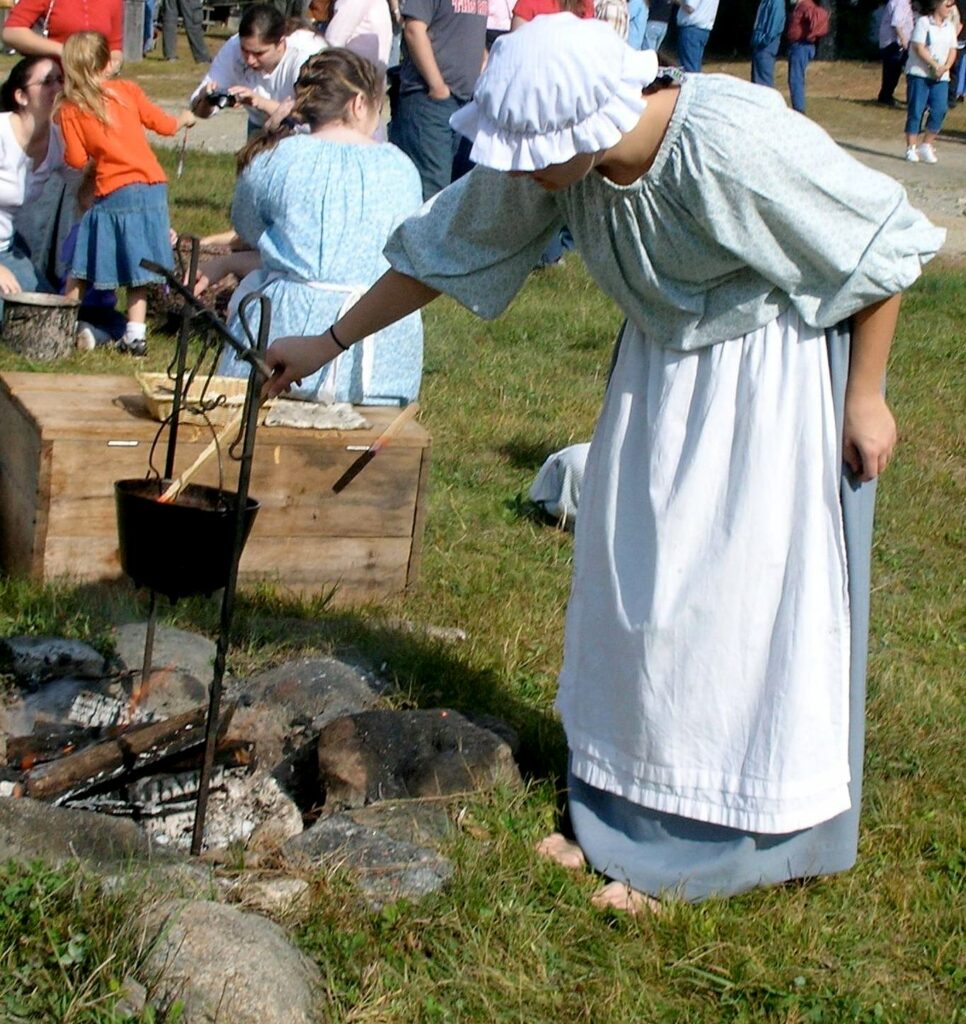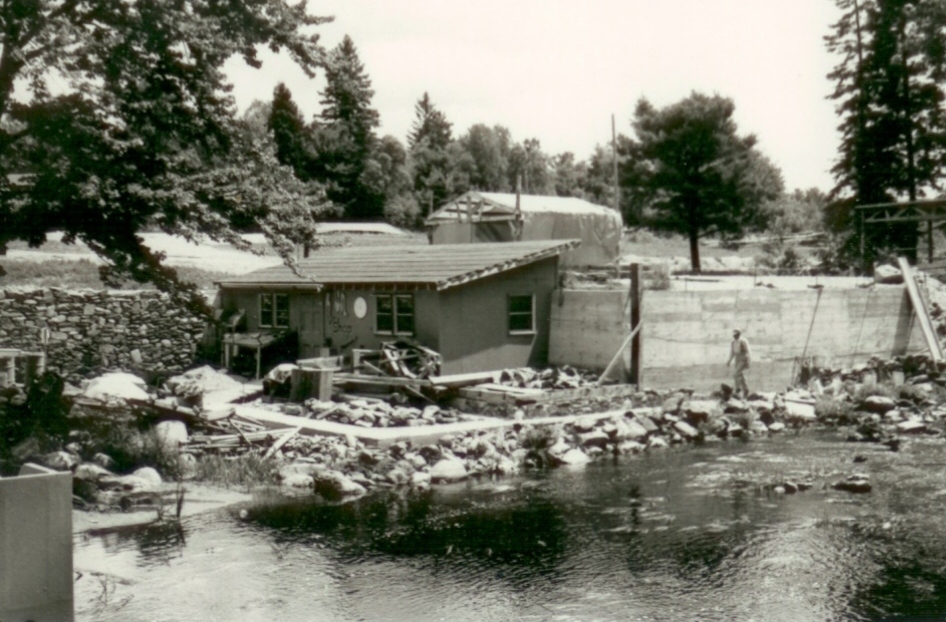
About Us
Mission
The mission of the Maine Forest and Logging Museum is to celebrate Maine’s rich forestry and logging history through education, demonstration, preservation, and conservation; foster curiosity and enjoyment for all ages; and to inspire and encourage others to join our efforts.
About

MFLM is a nonprofit organization incorporated in 1960, and is unique within the State in its focus on forest resources in a cultural context. We have many events that focus on the forest and our goal is to embrace all the forest is and has been! We believe that everyone has a way that they can actively engage with the forest, and to support that, we have regular programming to help people find ‘their place in the woods’.

Our larger events often combine an interactive Living History format with an operating “up-and-down” sawmill, and a variety of other interpretative sites that include an authentic blacksmith shop, batteau, trappers’ line camp, covered bridge, and a settlers’ log cabin. With school tours and public programs at Leonard’s Mills, the Museum provides to residents of the state and visitors an educational and enjoyable experience through living history. The buildings, collections, research, and – most importantly – the educational and public programs of the Museum are the accomplishments of hundreds of volunteers from throughout the State (drawing from the entire Maine Highlands region, and from points as far as Fryeburg, Millinocket, and Houlton).
History
In the mid 1950’s a group of enthusiastic volunteers, mostly associated with forestry, proposed the establishment of a museum to preserve and portray the history of the logging and lumbering industries in Maine. As an “outdoor museum”, this proposal would create a unique and innovative way to educate people of all ages about Maine’s forest heritage. Eastern Maine had been built on logging and lumbering, and there was nothing to portray that part of our history other than a statue of Paul Bunyan in Bangor. During the next decade, volunteers collected artifacts, documents, tools, and stories to preserve that which seemed doomed to be forgotten by generations removed from the old logging and lumbering way of life. The next obvious conundrum arose in the form of a need for space. Where would these artifacts be housed? How would they be made available to the public?

A unique plan was crafted to create a “living history site” to share authentic artifacts and portrayals of craftsmen, housing, and food that were part of a woodcutter’s life on the Maine frontier. A search for the appropriate spot for such a site eventually located “Leonard’s Mills”, as archaeologists had found evidence of five sawmills on Blackman Stream. During the late 1960’s, a total of 204 acres of the Penobscot Experimental Forest were deeded as a donation to MFLM by the following companies: Scott Paper Co., Great Northern Paper Co., International Paper Co., St. Regis Paper Co., Diamond International Corp., Boise Cascade Paper Group, Dead River Co., Prentiss & Carlisle Co., J.W. Sewall Co., J.M. Huber Corp., Seven Islands Land Co., J.D. Irving Ltd. Shortly thereafter, other lands were donated by Pierce Webber and Edmund Nolette. More recently, Beverly Spencer donated additional acreage. In total MFLM now owns more than 450 acres.
In November 1960 fifteen supporters of the idea of a “Forestry and Logging Museum” petitioned the State of Maine for incorporation. Those Officers and Directors included:
Dwight Demeritt – Head of the School of Forestry at the University of Maine 1934-1946
William Hepburn – Forest Manager, Diamond Match Timber Unit at Oakland, Maine
Fred Holt – Maine Forest Service, Augusta
Albert D. Nutting – Head of the School of Forestry at University of Maine 1958 – 1971, Formerly Forest Commissioner State of Maine
Earl Spaulding – Dead River Co.
Philip Coolidge – Forestry Consultant – Bangor, Maine
Louis Freedman – Penobscot Chemical Fibre Timberlands Manager
William Hilton – Great Northern Paper Timberlands Manager – Bangor Office
Austin Wilkins – Forest Commissioner State of Maine
John Maines – Great Northern Paper Timberlands Manager – Bangor Office
Joel Marsh – Maine Forest Service Augusta
Ernest Rand – Oxford Paper Company
Edwin Giddings – Manager, Penobscot Chemical Fibre Timberlands
F. E. Pearson – Manager, St Croix Paper Woodlands, Woodland, Maine
Omar Sawyer – Manager, Hollingsworth & Whitney Timberlands, Waterville, ME
The site of Leonard’s Mills in 1968 consisted of forestland, the remnants of a stone dam, and Blackman Stream. Visionaries created a few diagrams of this living history site, all focusing on a water-powered sawmill with a community of re-enactors harvesting timber, running the mill, making various wood products, living in camps, and period dwellings, as Maine’s early settlers would have done.
History isn’t limited to one period, and Maine’s forest heritage continues into the present. Later development at Leonard’s Mills has preserved equipment, machinery, tools, photos, and documents into the 1900’s. A collection of chainsaws, a clapboard mill, Lombard Log-hauler, shingle mill, and rotary sawmill have all begun to come alive to portray life in the 1900’s, as it related to lumbering and wood products.
Timeline of Development
- Incorporated Nov. 21, 1960.
- Early volunteers from forest industry and UMaine searching for site upon which to build a museum to preserve forest industry artifacts, documents; sites in Orono, Stillwater, Bangor considered
- Plans evolved to design a living history museum for presenting life in a lumbering settlement with mills, homes, blacksmith shop, etc.
- Old mill site located on Nichols (aka Blackman Stream) owned by Penobscot Experimental Forest
- Talks to secure land from PEF began
- Bailey Bridge spanned Blackman Stream
- Pole barn moved from Clifton to serve as storage
1970s:
- Plans developed for water-powered sash sawmill – models built
- Field days held to clear land
- Began site work for mill
- Rebuilding of original dam
1980s:
- Transfer of 204 acres from PEF completed
- Saw pit built
- Water-powered mill constructed
- Trails cleared for hiking
- First bateau built
- Caretaker’s’ House with workshop built
- Covered bridge erected
- Trappers’ camp built
- Blacksmith Shop moved from Hudson
- Lombard Log-hauler purchased
- First living history event held with bean hole beans
- First newsletter published
- Mill first ran though adaptations needed
1990s:
- Other structures built -Sawyer’s House, Gift Shop, hovel, amphitheater
- Water-powered sawmill finished
- Log cabin moved from Clifton
2000s:
- Mill area started for 1990’s mills: rotary sawmill, clapboard mill, shingle mill, planer
Fishway built - New boiler for Lombard built following $65,000 fund raising drive
- Smokehouse constructed by Scouts
- Water wheel rebuilt
2010s:
- Shingle mill sawed cedar and pine shingles
- Machinery Hall built
- Storage mezzanine completed for storing tool collection
- Crooker Lombard steam log hauler brought to museum to help with our restoration
- Our Lombard log hauler moved into Machinery Hall, restoration completed in 2014 with help from 80 University of Maine Mechanical Engineering Technology students and many volunteers
- 1937 Cletrac restored and runs at events
- University of Maine Construction Engineering Technology students install new cedar shake roof on covered bridge in 2014
- Chet Grady Machine Shop completed in 2015
- Over 250,000 Alewives swim up Blackman Stream fishway returning to Chemo Pond in 2015 – first Alewife Festival held
- Alewife smokehouse built
- Tuesday Crew puts new roofs on pole barn, gift shop, and Alewife smokehouse
- Circa 1920 Hackett & Witham rotary sawmill restoration nears completion, makes test run in 2016
- 2018: Trapper’s cabin reconstructed.
- 2018: Tuesday crew constructed new privies by Visitors Center, Caretaker’s House and Blacksmith’s Shop.
- Chet Grady Machine Shop operational in 2017
- Tuesday crew has major salvage timber harvest from 2017 windstorm
- Museum awarded $15,000 Davis Family Foundation Grant, UM CET
students replaced hovel roof, built two new ADA accessible tank privies
in 2018 - Lombard logging sled restored by PIRCTC students
- UM CET students build Donnell clapboard mill building, road and parking
improvements, new roof on Lynch building - New Biscuit Stand built as Eagle Scout project
- Tuesday Crew builds walkway over dam, Blacksmith Shop addition
2020s:
- New Lombard road and logging sled pavilion built with generous grant from Stephen & Tabitha King Foundation
- John Deere tractor donated to the Museum
- Lemonade Stand replaced
- Main spillway of Mill dam replaced
- Bean Serving Stand replaced by UM CET students
- Batteau Shed roof and walls replaced
- Pit Saw roof replaced